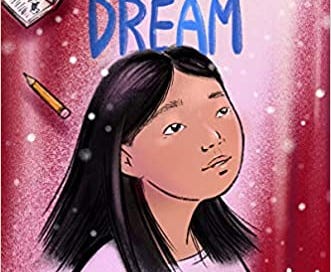'Dream, Annie, Dream': Looking for a way to fit in
Waka T. Brown's middle school novel channels coming-of-age angst.
This post contains an affiliate link or links. If you use a link to buy a book, I may earn a small commission. You can find all the books that have been featured in this newsletter in my Bookshop store.
The gap between what my kids were assigned to read in their middle school English classes and what I read in mine is pretty wide. I read “A Separate Peace” and “Lord of the Flies” and “The Chocolate War.” They read “Esperanza Rising” and “Seedfolks” and “Inside Out and Back Again.” Some key differences.
I hope middle schools add to their reading lists “Dream, Annie, Dream,” Waka T. Brown’s 2022 novel about a Japanese American girl in 1980s Kansas who clashes with her parents and classmates over her hopes and dreams as she tries to figure out how she fits in at her new middle school. It’s a book I wish I’d been able to read at that age, as Brown expertly and sympathetically channels the experiences of a daughter of Asian immigrants in a mostly white community.
I first heard of Brown after she published her first book, the memoir “While I Was Away.” When she was 12, her Japanese immigrant parents decided she was falling unacceptably short in her Japanese language skills. They sent her to live with her grandmother in Tokyo for a few months. “While I Was Away” explores the young Waka’s reaction to trading one form of not-quite-belonging for another. In Kansas, she’s a top student but looks different from everyone else. In Tokyo, she blends in physically but struggles in class and doesn’t understand the social mores. The book, narrated in wistful prose, was a finalist for a 2022 Oregon Book Award. (“Dream, Annie, Dream” is a finalist for the 2023 Oregon Book Awards, which will be announced in April.)
“Dream, Annie, Dream” uses fiction to move deeper into the theme of a search for identity. Annie stays put geographically, but is upended by her move to middle school. Her passions are theater and basketball, but her mother reads a copy of Time magazine and asks why she can’t be more like “Those Asian-American Whiz Kids” on a fast track to science- and math-based careers. She auditions for a couple of plays and wonders whether her race had anything to do with the results. She has to put up with a teacher who regularly puts down girls and then, in a conference with her parents, comments that she thought “you people” were good at math.
Then there’s the international food night at their church. A white man buys a plate of the gyoza that Annie’s mother has made, stumbling over the unfamiliar word, then corrects her:
As Professor Kelly smacked his lips and licked his fingers, I thought, Mom was right, Again.
He chewed and sucked on his teeth. His eyes grew wide. "These are pot stickers, not gi-oh-za!"
Annie’s mother remains poised and polite while Annie tries to figure out why she herself feels ruffled.
All of a sudden, it struck me. They talked down to her. Like she was a thing, like a doll — not a person, like she didn’t even know what the name of the dish she made was.
In exploring one girl's coming-of-age year, "Dream, Annie, Dream" reflects a universal journey.



